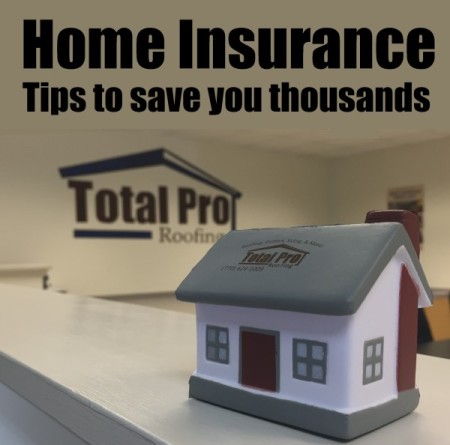Home Insurance Tips (that could save you thousands!)
Sometimes just a few easy questions could mean saving thousands of dollars. Working in the roofing industry, we see claims on a daily basis, and sometimes a homeowner learns too late that their policy didn’t fully cover them. Here are our home insurance tips for making the most of your homeowner’s policy, as seen through the eyes of someone who you’ll need to call on to make those repairs:
- You want a RCV policy. This stands for “Replacement Cost Value”. The alternative is an “ACV – Actual Cash Value” policy. Simply put, if you ever file a claim, you want them to pay to fully replace things, not just pay for what the item is worth after all the years of wear and tear. (Also known as depreciation.)
In roofing, this is a big deal. If a wind storm flips back some of your shingles, your insurance company could pay to fully replace your roof if there’s enough damage. (Think of it as a storm damage lottery, and you just won the jackpot!) Roofs aren’t cheap, and an ACV policy could mean the difference of $5,000 or more out of your pocket, instead of just a deductible payment. Add other weather related damages from that same storm to your gutters, siding, etc., and you’re looking at some hefty expenses.
- You want a low deductible. “Low” in this case is $1,000. It puts you in that threshold where you could handle small repairs without making a claim, but protects you when it comes to larger repairs. Insurance companies are a business, and one way we’ve seen them creep up is with their default deductibles, often without a homeowner realizing. Many major providers are moving away from a standard $1,000 deductible (or other increments of $500) to a percentage of value model. This is happening with new policies, and even with renewals, where this major detail is hidden within the print without any type of indication making it clear.
Case in point? We know of a homeowner that caught this notice 3 pages into her no-action-needed renewal paperwork. It jumped her deductible from $1,000 to nearly $3,000. She called her insurance company to find out what the difference would be in yearly premium to put her deductible back at $1,000. The answer? $14. (Yes, fourteen dollars.)
- You want code upgrades. This little endorsement will save you hundreds at the least. It covers you in the event you have to have repairs, but have added expenses because of new code regulations. Right now, we’ve seen homeowners benefit with this on drip edge. Drip edge is a metal edging that wasn’t required in Georgia prior to 2014, but it has to be installed on all roof replacements now. Drip edge averages around $500 on a typical job.
The majority of our homeowners have code upgrade coverage on their policies, but as insurance companies change things, it might not be a standard endorsement as frequently. It was explained to us that the insurance companies got hit with paying for electrical code upgrades years ago, and that they are still a little weary after that one.
- Talk to your neighbors. Ask your neighbors about their experiences with their insurance companies. Some companies are more lenient in approving damage and have easier claims processes. Cheap premiums are great, but they are only as good as the company’s reputation in paying claims when you actually use all that insurance you have purchased. With a little research, you can find the best of both worlds.
Education and knowledge is everything – especially when it comes to your wallet!

